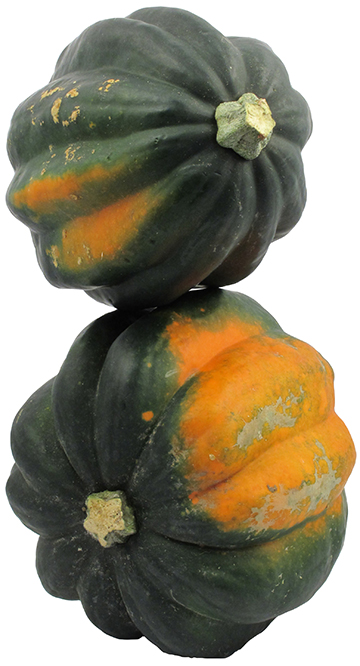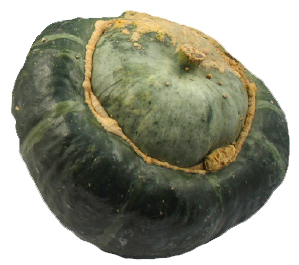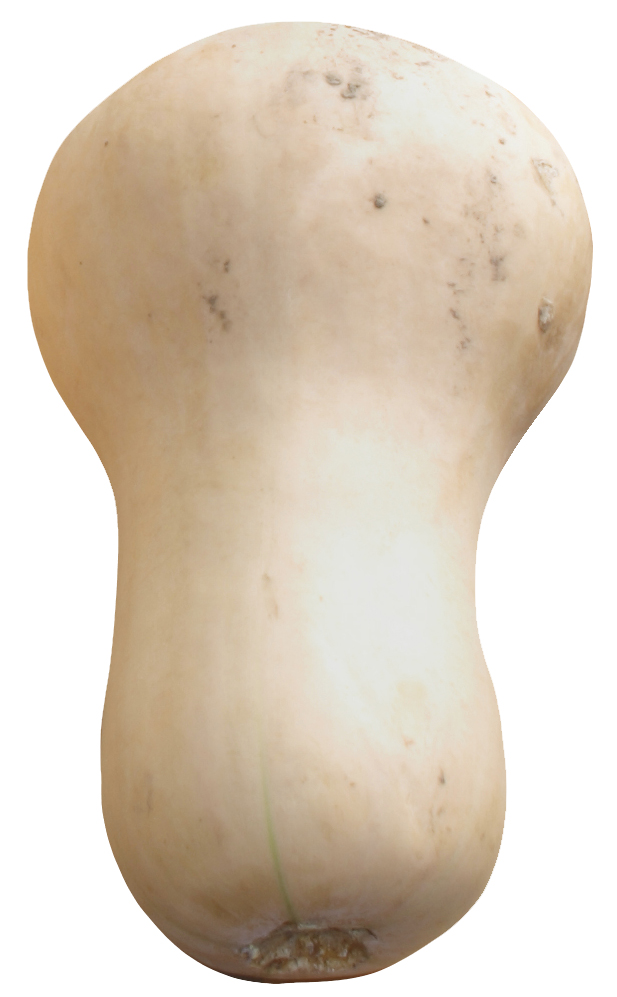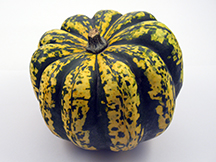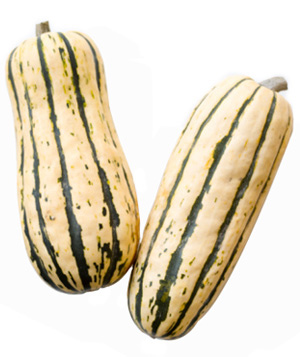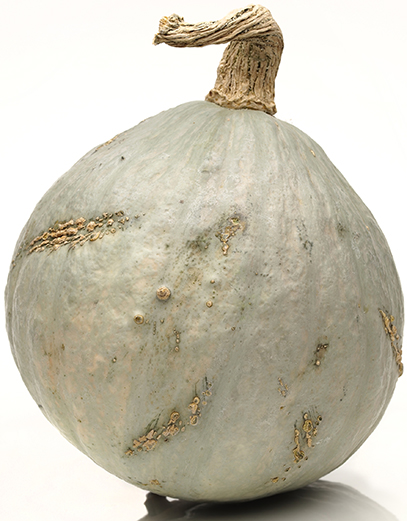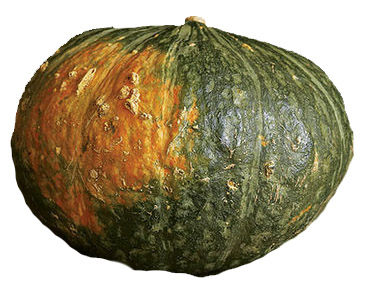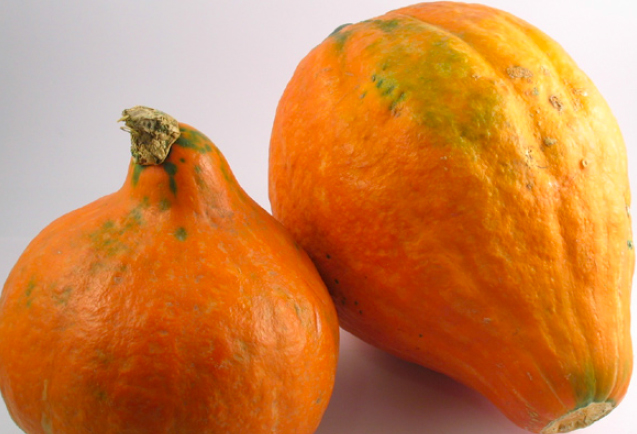
Winter Squash 101, by Katie Powderly
If you are not already a squash-lover and need some additional motivation to incorporate it into your diet this winter, perhaps some nutritional information will sway you. High in vitamins, particularly A, B6, C, and E, squash could be just the boost to your immune system that will prevent you from coming down with that nasty cold going around at work. In addition to these vitamins, squash offers calcium, niacin, manganese, and potassium. It is low in saturated fat, calories and sodium and has no cholesterol. Are you interested yet?
Finally, squash is known for being high in carotenes, especially the well-known beta carotene. Carotenes are substances thought to prevent many types of cancers. They are simply red and yellow pigments, and are found in all plants that photosynthesize. Interestingly, the deeper the color of the flesh of a squash, the higher it is in carotenes. Therefore, darker-fleshed varieties such as acorn and pumpkin are higher in carotenes, and, as a result, may better prevent certain cancers.
By far, the most common question I am asked about squash is, “Which is which?” Inevitably, that question is followed by, “What, if any, are the differences between these varieties?” In other words, many Owners feel unsure of their ability to properly identify the different types of squash we sell here, and wonder if there are any nutritional, taste, or textural differences between them. If this is the case for you, don’t be ashamed! There are many varieties that look similar, and discerning between them can be tricky, even for staff. Below is a brief description of all of the types of squash we carry, but chances are we will not carry all of these varieties at once, as availability will vary.
This variety is easily identifiable because of its ridged acorn-like shape. Dark green in color, acorn squash will often have a bright orange ground-spot. A white ground-spot indicates that the squash was picked prematurely. On occasion, no ground-spot will be present, which usually means that the vines of the squash plant climbed a fence, trellis, or another nearby object, and the squash grew and matured without touching the ground. Acorn also comes in golden and white varieties. Its flesh is sweet and moist. To prepare, halve the squash and scoop out seeds, then bake or steam it. You can mash it, eat it with butter and salt or brown sugar, or cube and serve it in a Thai curry dish. I actually carved it to remove the seeds and sliced it like a melon and grilled it once this fall, and it worked pretty well. Most recipes instruct to remove the skin, but I have left the skin on when cubing the squash, and find that it is palatable if cooked long enough. My favorite method is to halve it, butter and bake it, and serve it stuffed with wild rice and pre-sautéed vegetables.
Buttercup is one of several squash in the turban squash family named for their shape and characterized by very hard, dark-green shells, and a lighter green top that looks like a cap or yarmulke on the blossom-end. This variety also is marked by pale vertical stripes that travel from the stem to the blossom-end.
When selecting a buttercup, look for a very hard squash with no soft or dark spots. Pay careful attention to the hat-like part of the squash, as this is the first portion to rot. Be sure your buttercup has a stem and a dull skin.
The flesh of the buttercup is dry and dense. The absence of water in its flesh makes it remarkably sweeter than other varieties. In my experience, the unique texture of these turban squash makes them better suited to baking, mashing, and pureeing, as opposed to cubing. At times I have found the flesh to be crumbly when cooked. A final tip: when preparing this type of squash, exercise caution when cutting it, as it is very hard. I think that halving it, cooking it, and scooping the flesh out of the skin works best.
Hands down, butternut is our best-selling variety of squash. This seems to be the variety with which members feel most comfortable and confident. It is somewhat pear-shaped, with khaki-colored skin and bright orange flesh. Butternut is a fairly sweet squash with a relatively moist texture.
Choose a firm butternut without any soft spots or wrinkles. Look for a skin that is unblemished, without any dings. To prepare, peel with a potato peeler, then cook as desired. This variety is well suited for cubing and steaming, baking, and mashing. Butternut is also excellent in soups and gratins.
Shaped just like an acorn but brightly speckled, the carnival squash is off-white with dark yellow flecks, or light green with dark green flecks. The flecks form vertical stripes that go from the stem to the blossom-end. From time to time, half of the carnival will be spotted cream and yellow while the other half is spotted light and dark green.
In terms of texture and flavor, this squash is very reminiscent of an acorn. It is particularly beautiful stuffed.
The delicata is an heirloom variety of squash, which means, in short, that the cultivar is over fifty years old. It is oblong in shape and ridged. It is yellow or cream-colored, with dark green stripes in its ridges. Though a winter squash with the typical hard shell, this variety’s size and shape are more similar to summer squash. A less durable variety of winter squash, the delicata does not seem to store as long as varieties such as acorn or butternut. When aging, its oblong, green stripes will fade and the whole squash will pale to a cream color. Hence, when selecting a delicata, choose a firm squash with deep color contrast between the yellow skin and its green stripes.
When preparing, note that the skin is edible. Delicata is excellent baked, though its mild flavor tends to be diminished by steaming. Try it stuffed or pair it with fresh herbs for an especially wonderful balance of flavors.
The hubbard is perhaps my favorite squash from an aesthetic perspective. Basically round, the stem and winter end taper to create a rather unusual shape. The skin may be smooth or bumpy. Available in orange, green, or a stunning grayish-blue, this squash is often featured in autumnal arrangements.
Hubbard is a very mild tasting squash, so this is another variety that works well paired with either butter and fresh herbs or brown sugar. It is also used as pumpkin pie filling.
The kabocha squash is one variety that seems to perplex many members. The kabocha is a particularly hard-shelled squash shaped like a pumpkin, and its dull skin comes in either deep orange or deep green and may be slightly bumpy or smooth. Like the turban squash, the flesh of this variety is drier and sweeter than an acorn or a butternut, for example. As a result, kabocha work well baked and pureed.
There are two types of kuri squash: red and green. The red variety is in fact a deep orange, and the green is very dark forest. Kuri squash are characterized by a very hard shell, a dull skin, and may have spoke-like stripes that radiate out from the stem end. Often mistaken for the kabocha, the kuri can be distinguished from its look-alike by the taper in the blossom end, much like the taper of a hubbard.
The flesh of the kuri is dry and sweet, and I have heard several people liken its flavor to that of a chestnut. Halve and remove seeds, and try it steamed, mashed, baked, pureed. I have used this variety successfully as a base for creamy blended soups.
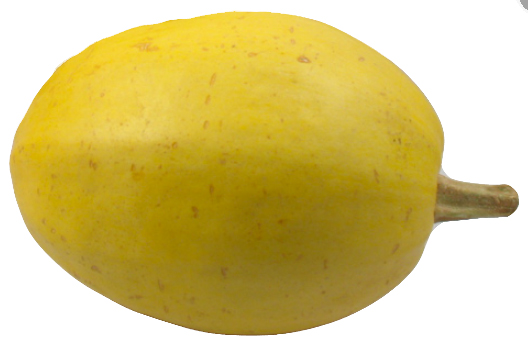
Oblong and somewhat cylinder-shaped, the spaghetti squash is either cream-colored or yellow. Perhaps the rogue of the squash family, its texture is rather surprising to those accustomed to the more traditional acorn or butternut. Once cooked, the flesh of the spaghetti shreds into thin strands similar to, well, spaghetti. Larger spaghetti squash will yield thicker strands.
This squash is incredible halved and baked with olive oil, salt, and black pepper. It may also be boiled, and even microwaved. Once cooked, let the squash cool before removing the shredded flesh with a fork.
